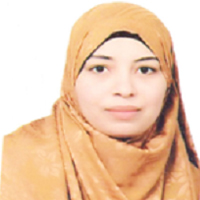Abstract
Research Article
Working process of steam turbine and establishment of start-up model
Yongjian Sun* and Chao Dong
Published: 24 May, 2021 | Volume 4 - Issue 1 | Pages: 039-047
In the research of steam turbine rotor, start-up optimization is a very key research problem. A series of start-up optimization research can greatly improve the start-up efficiency of steam turbine and the safety performance of the unit. The start-up optimization of steam turbine is inseparable from the analysis of the start-up process of steam turbine and the mathematical model of the startup process of steam turbine unit, because the optimization of steam turbine unit can be regarded as a function to find the optimal solution. This paper analyzes the start-up process of 300 MW steam turbine, analyzes the start-up process of steam turbine unit through the data used in the actual power plant, and gives the mathematical model of cold start-up of steam turbine according to the start-up process of steam turbine, so as to further study the start-up optimization of steam turbine. Finally, the optimization model is determined by several key parameters, which are three weight coefficients α1,α2,α3, the actual damage value Di and damage limit value Dlim, and the start-up time ti and total start-up time t0 of each stage.
Read Full Article HTML DOI: 10.29328/journal.ijpra.1001040 Cite this Article Read Full Article PDF
Keywords:
300 MW steam turbine; Start-up process; Finite element; Stress
References
- Ahmed A, Robert E, Daniel L. et al. Low cycle fatigue life modelling using finite element strain range partitioning for a steam turbine rotor steel. Theoretical and Applied Fracture Mechanics. 2020; 113: 311-323.
- Ahmed A, Robert E, Mattias C, et al. Low cycle fatigue modelling of a steam turbine rotor steel, Procedia Structural Integrity. 2019; 23: 149-154.
- Yang YP, Li CZ, Wang NL, et al. Progress and prospects of innovative coal-fired power plants within the energy internet. Global Energy Interconnection. 2019; 2: 160-179.
- Xuanchen Z, Haofeng C, Fuzhen X, et al. On the creep fatigue and creep rupture behaviours of 9C12% Cr steam turbine rotor. Eur J Mechan. 2019; 76: 263-278.
- Janusz K, Mateusz B, Marcin J. The thermodynamic and economic characteristics of the modern combined cycle power plant with gas turbine steam cooling. Energy. 2018; 164: 359-376.
- Rusin A. The impact of the control method of cyclic operation on the power unit efficiency and life. Energy. 2018; 15: 565-574.
- Jan T, Dawid T, Karol K, et al. Monitoring of thermal stresses in pressure components based on the wall temperature measurement. Energy. 2018; 160: 500-519.
- Taler J, Dzierwa P, Taler D, et al. Optimization of the boiler start-up taking into account thermal stresses. Energy. 2015; 92: 160-170.
- Ji D, Sun J, Sun Q, et al. Optimization of start-up scheduling and life assessment for a steam turbine. Energy. 2018; 160: 19-32.
- Dettori S, Maddaloni A, Colla V, et al. Nonlinear Model Predictive Control strategy for steam turbine rotor stress. Energy. 2019; 158: 5653-5658.
- Seik P, Jugon S, Mitsuhiro M, et al. Validation of measured data on F/A ratio and turbine inlet temperature with optimal estimation to enhance the reliability on a full-scale gas turbine combustion test for IGCC. Int J Hydrogen Ene. 2019; 44: 13999-14011.
- Zhu XC, Chen HF, Xuan FZ, et al. On the creep fatigue and creep rupture behaviours of 9C12% Cr steam turbine rotor. Eur J Mechan. 2019; 76: 263-278.
- Ahmed A, Robert E, Daniel L. Low cycle fatigue modelling of a steam turbine rotor steel. Theoretical and Applied Fracture Mechanics. 2019; 23: 149-154.
- Saboya BI, Egido I, Lobato ME. MOPSO-tuning of a threshold-based algorithm to start up and shut-down rapid-start units in AGC. Int J Electrical Power Energy Systems. 2019; 108: 153-161.
- Dettori S, Maddaloni A, Colla V, et al. Nonlinear Model Predictive Control strategy for steam turbine rotor stress. Energy Procedia. 2019; 158: 5653-5658.
- Zhang Y, Benjamin D, Liu JB, Shen J, et al. Zone economic model predictive control of a coal-fired boiler-turbine generating system. Che Eng Res Design. 2020; 153: 246-256.
- Parag P, Babji S, Rajagopalan S. Process Fault Detection in Heat Recovery Steam Generator using an Artificial Neural Network Simplification of a Dynamic First Principles Model. Computer Aided Chemical Engineering. 2018; 44: 2065-2070.
- Milad M, Ali C, Amin R. An intelligent hybrid technique for fault detection and condition monitoring of a thermal power plant. Applied Mathematical Modelling. 2018; 60: 34-47.
- Mariusz B. The low-cycle fatigue life assessment method for online monitoring of steam turbine rotors. Int J Fatigue. 2018; 113: 311-323.
- Dettori S, Maddaloni A, Colla V, et al. Nonlinear Model Predictive Control strategy for steam turbine rotor stress [J]. Energy. 2019; 158: 5653-5658.
- Yu J, Liu P, Li Z. Hybrid modelling and digital twin development of a steam turbine control stage for online performance monitoring [J]. Renewable and Sustainable Energy Reviews. 2020; 133: 110077.\
- Hugo A, Pipino, Marcelo M, et al. Nonlinear temperature regulation of solar collectors with a fast adaptive polytopic LPV MPC formulation [J]. Solar Energy. 2020; 209: 214-225.
Figures:

Figure 1

Figure 2

Figure 3

Figure 4

Figure 5

Figure 6

Figure 7

Figure 8

Figure 9

Figure 10
Similar Articles
-
Natural ferromagnetic resonance in cast microwires and its application to the safety control of infrastructuresSerghei Alexei Baranov*,E Adar,AM Yosher. Natural ferromagnetic resonance in cast microwires and its application to the safety control of infrastructures. . 2020 doi: 10.29328/journal.ijpra.1001028; 3: 118-122
-
Working process of steam turbine and establishment of start-up modelYongjian Sun*,Chao Dong. Working process of steam turbine and establishment of start-up model. . 2021 doi: 10.29328/journal.ijpra.1001040; 4: 039-047
-
Failure-oriented-accelerated-testing (FOAT) and its role in assuring electronics reliability: reviewE Suhir*. Failure-oriented-accelerated-testing (FOAT) and its role in assuring electronics reliability: review. . 2023 doi: 10.29328/journal.ijpra.1001048; 6: 001-018
Recently Viewed
-
Endoscopic treatment of pancreatic diseases via Duodenal Minor Papilla: 135 cases treated by Sphincterotomy, Endoscopic Pancreatic Duct Balloon Dilation (EPDBD), and Pancreatic Stenting (EPS)Tadao Tsuji*, G Sun,A Sugiyama, Y Amano,S Mano,T Shinobi,H Tanaka,M Kubochi,K Ohishi,Y Moriya,M Ono,T Masuda, H Shinozaki,H Kaneda,H Katsura,T Mizutani, K Miura,M Katoh, K Yamafuji, K Takeshima,N Okamoto,Y Hoshino,N Tsurumi,S Hisada,J Won,T Kogiso,K Yatsuji,M Iimura, T Kakimoto,S Nyuhzuki. Endoscopic treatment of pancreatic diseases via Duodenal Minor Papilla: 135 cases treated by Sphincterotomy, Endoscopic Pancreatic Duct Balloon Dilation (EPDBD), and Pancreatic Stenting (EPS) . Ann Clin Gastroenterol Hepatol. 2019: doi: 10.29328/journal.acgh.1001009; 3: 012-019
-
Euthanasia: Growing Acceptance amid Lingering ReluctanceTshibambe N Tshimbombu,Immanuel Olarinde,Judea Wiggins*,Maxwell Vergo. Euthanasia: Growing Acceptance amid Lingering Reluctance. Clin J Nurs Care Pract. 2025: doi: 10.29328/journal.cjncp.1001058; 9: 001-006
-
Various Theories of Fast and Ultrafast Magnetization DynamicsManfred Fähnle*. Various Theories of Fast and Ultrafast Magnetization Dynamics. Int J Phys Res Appl. 2024: doi: 10.29328/journal.ijpra.1001101; 7: 154-158
-
Nitrogen Fixation and Yield of Common Bean Varieties in Response to Shade and Inoculation of Common BeanSelamawit Assegid*,Girma Abera. Nitrogen Fixation and Yield of Common Bean Varieties in Response to Shade and Inoculation of Common Bean. J Plant Sci Phytopathol. 2023: doi: 10.29328/journal.jpsp.1001122; 7: 157-162
-
Peripheral perfusion index in critically ill COVID-19 and its association with multiorgan dysfunctionCornu Matias German*, Tonelier Matias, Roel Pedro, Sanhueza Laura, Orozco Sergio Martin, Sepulveda Mariana Elizabet, Svampa Silvana Enrica, Arana Osorio Erick and Martinuzzi Andres Luciano Nicolas. Peripheral perfusion index in critically ill COVID-19 and its association with multiorgan dysfunction. J Clin Intensive Care Med. 2023: doi: 10.29328/journal.jcicm.1001043; 8: 004-013
Most Viewed
-
Evaluation of Biostimulants Based on Recovered Protein Hydrolysates from Animal By-products as Plant Growth EnhancersH Pérez-Aguilar*, M Lacruz-Asaro, F Arán-Ais. Evaluation of Biostimulants Based on Recovered Protein Hydrolysates from Animal By-products as Plant Growth Enhancers. J Plant Sci Phytopathol. 2023 doi: 10.29328/journal.jpsp.1001104; 7: 042-047
-
Sinonasal Myxoma Extending into the Orbit in a 4-Year Old: A Case PresentationJulian A Purrinos*, Ramzi Younis. Sinonasal Myxoma Extending into the Orbit in a 4-Year Old: A Case Presentation. Arch Case Rep. 2024 doi: 10.29328/journal.acr.1001099; 8: 075-077
-
Feasibility study of magnetic sensing for detecting single-neuron action potentialsDenis Tonini,Kai Wu,Renata Saha,Jian-Ping Wang*. Feasibility study of magnetic sensing for detecting single-neuron action potentials. Ann Biomed Sci Eng. 2022 doi: 10.29328/journal.abse.1001018; 6: 019-029
-
Pediatric Dysgerminoma: Unveiling a Rare Ovarian TumorFaten Limaiem*, Khalil Saffar, Ahmed Halouani. Pediatric Dysgerminoma: Unveiling a Rare Ovarian Tumor. Arch Case Rep. 2024 doi: 10.29328/journal.acr.1001087; 8: 010-013
-
Physical activity can change the physiological and psychological circumstances during COVID-19 pandemic: A narrative reviewKhashayar Maroufi*. Physical activity can change the physiological and psychological circumstances during COVID-19 pandemic: A narrative review. J Sports Med Ther. 2021 doi: 10.29328/journal.jsmt.1001051; 6: 001-007

HSPI: We're glad you're here. Please click "create a new Query" if you are a new visitor to our website and need further information from us.
If you are already a member of our network and need to keep track of any developments regarding a question you have already submitted, click "take me to my Query."

















































































































































